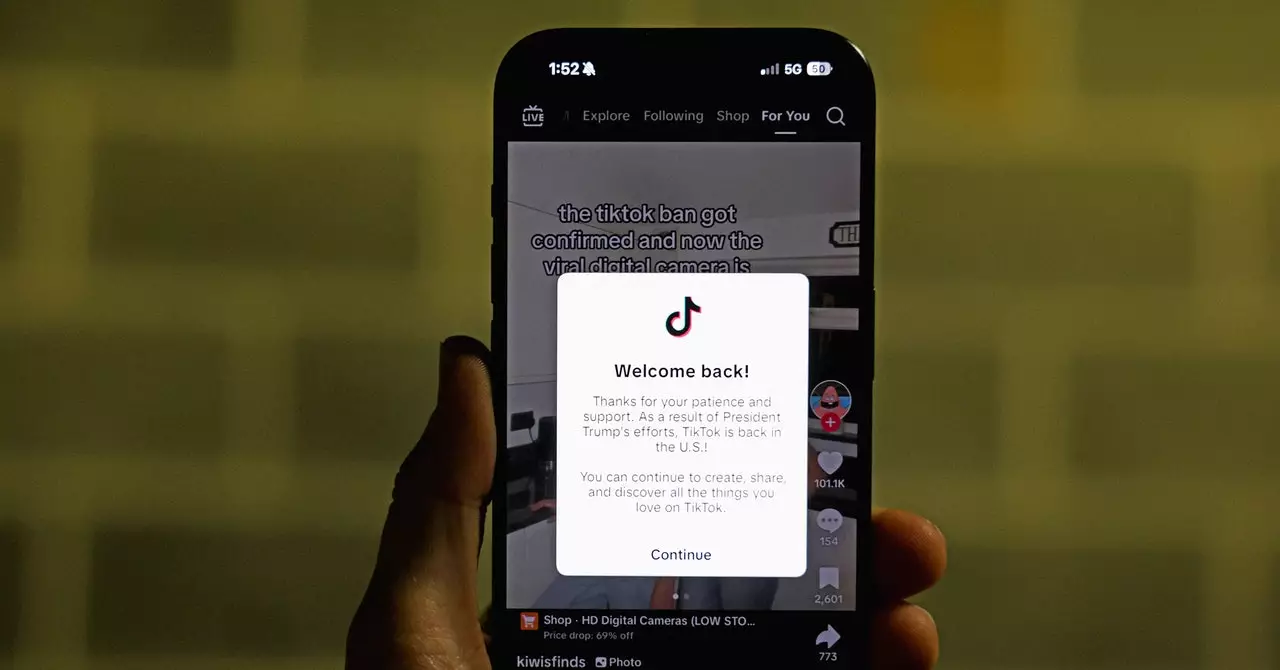The saga of TikTok’s return to the U.S. app stores has unfolded against a backdrop of heightened scrutiny regarding its Chinese ownership and implications for national security. Just recently, twenty-six days after being removed from both the iOS App Store and Google Play store, TikTok returned to the digital marketplace. This development follows a formal assurance from U.S. Attorney General Pam Bondi to Apple and Google, stating they would not incur penalties for reinstating the app. This article aims to unpack the complexities of TikTok’s re-entrance and the broader implications for the app landscape.
The reinstatement of TikTok in U.S. app stores is a clear reflection of ongoing tensions and negotiations between governmental agencies and tech giants. The original decision to ban TikTok stemmed from the Protecting Americans From Foreign Adversary Controlled Applications Act (PAFACA), legislation designed to mitigate risks posed by foreign-owned applications, specifically those in extensive data collection. Amid such controversies, the legality of maintaining or updating apps tied to ByteDance, TikTok’s parent company, came into question.
The situation reached a critical point when TikTok was abruptly removed from app stores on January 19, provoking widespread user frustrations. Interestingly, the app was able to resume operations for existing users on the same day it was banned, following assurances from then-president-elect Donald Trump. This quick turnaround is indicative of the unpredictable nature of regulatory actions surrounding tech applications, illustrating how political movements and executive decisions can sway the digital marketplace.
Implications of Political Changes
Trump’s executive order, which offered a 75-day reprieve for TikTok, reflects a strategy to provide time for deliberation while seeking a resolution that would protect national interests without eradicating a popular platform. The direct reference to the potential for a 90-day deadline extension upon demonstrating “significant progress” in negotiations showcases the interplay between commercial interests and security concerns.
The Trump administration’s focus on renegotiating TikTok’s ownership has ushered in ambiguity regarding the app’s future. Notably, speculation that Oracle and a consortium of investors might gain control over TikTok illustrates the complexities and pressures on tech firms to align with American ownership standards while continuing to cater to the app’s massive user base.
During TikTok’s absence, rival applications experienced a surge in downloads, offering a glimpse into how quickly market dynamics can shift in the tech industry. As users were met with notifications about TikTok’s inavailability, competing apps seized the moment to capture a hungry audience craving short-form video content. This shift underlines the fragility of user loyalty in the age of digital innovation, as consumers are often willing to pivot to alternatives when faced with disruption.
On the other hand, the handling of the TikTok situation has raised critical questions about the responsibilities of tech companies in navigating political landscapes. By initially removing TikTok from their platforms, Apple and Google adhered to legal mandates while scrutinizing potential repercussions for their business models. Their eventual decision to reinstate TikTok post-legal assurances demonstrates a delicate balance between regulatory compliance and maintaining user engagement.
Looking ahead, the road for TikTok remains fraught with uncertainty. The platform’s return is not just about reclaiming its user base, but also about addressing larger concerns regarding user data security and foreign ownership. Though TikTok reappeared in U.S. digital marketplaces, deeper issues surrounding privacy, data protection, and national security linger.
The potential sale discussions edifying the app’s future highlight the delicate balance between ownership and user trust. If negotiations lead to a change in ownership structure that resonates with the U.S. government’s security framework, it may alleviate some concerns, allowing TikTok to stabilize its position in the marketplace.
TikTok’s return to the app stores is both a triumph and a precursor to ongoing challenges. As political pressures continue to evolve, the app’s management must strategize not only on user engagement but also on navigating the regulatory environment. The implications of this scenario extend beyond TikTok; they may shape the future landscape of how foreign-owned applications operate within the United States. As the digital world becomes increasingly interconnected with politics, the stakes for managing user trust and regulatory compliance have never been higher.

